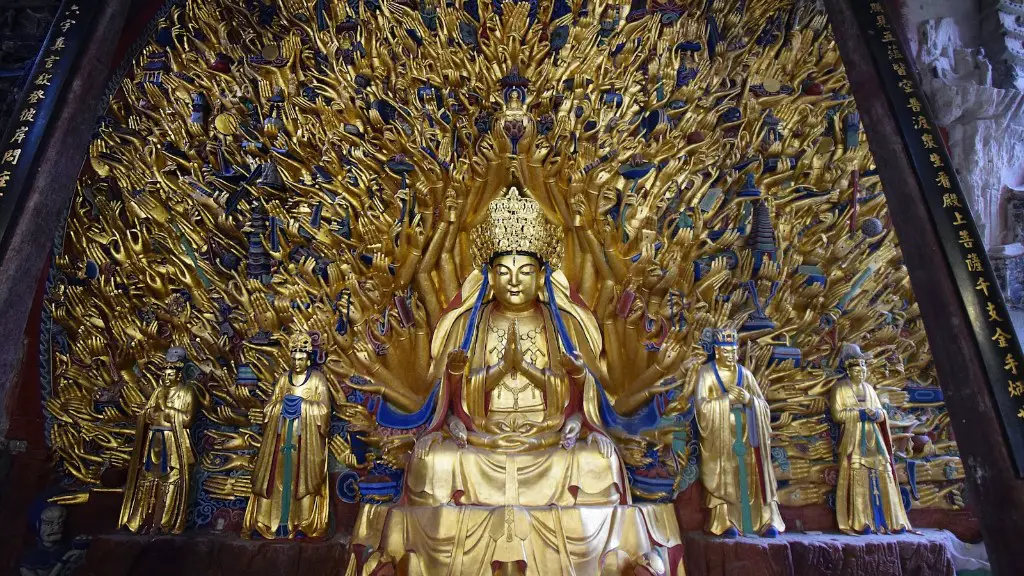Historical Significance of Temple Mount
The Temple Mount, the holiest site in Judaism, is the most important site in the religion. The Temple Mount, or the site of the ancient Temple of Solomon, was the location of the two holy temples between 1000–587 BCE and 19 BC-66 CE. It is the historical, religious, and cultural heart of Judaism and the Jewish people, and it is revered by Jews as the site of the holiest place in the world. The temples were built on two different levels on the hill-top of the mount, and it is believed that the first and second Jewish temples were destroyed by the Babylonians and later by the Romans.
Temple Mount is also a symbol of the struggle between Judaism and Islam, and has been the source of conflict between the two religions since the Babylonian conquest of Jerusalem in 586 BCE. This struggle has continued through the ages from the invasion of the Crusades and the British Empire to the current unrest in the Middle East.
The Temple has been a source of inspiration for the Jewish people for centuries and is seen as a symbol of Jewish solidarity and pride. It is also the main religious site for the Jewish nation and is the place for prayer for all Jews. The Western Wall, a part of the wall that once surrounded the Temple, is the holiest site in Judaism and is the site of many religious ceremonies and rituals. Jews come from around the world to pray at the Western Wall.
Religious Practices Asociated with Temple Mount
The Temple Mount has been seen as sacred by Jews for centuries and has been the place of the most important religious ceremonies in the Jewish faith. It is the site of the daily sacrificial offerings that were made by both the Levitical and non-Levitical priests, and also the place of the great feasts such as Passover and Sukkoth, which were observed at the time of the first Holy Temple.
Rituals such as reciting the daily prayers and blowing the Shofar (ram’s horn) were performed on the Temple Mount during the celebrations and services held at the Temple. Today, it is still a focus of Temple rituals, and many Jews visit the Temple Mount each year to pray and offer their devotion to God.
The Mount is also the site of the holiest part of the Jewish faith – the Western Wall. The Wall is the remnant of the western wall of the Second Temple, and it is a symbol of Jewish hope and redemption. Jews from around the world come to the Wall to pray and meditate, and the Wall is a place of pilgrimage for many Jews.
The Temple Mount is a place of major spiritual and historical importance to Jews, and it is seen as a source of unity and strength among Jews. It is a place of spiritual connection to the past, and of hope for the future.
Jewish-Muslim Conflict Over Temple Mount
The Temple Mount has been an ongoing source of strife between Jews and Muslims since the times of the Babylonian conquest of Jerusalem. Despite its spiritual and symbolic importance to Jews, it has been the subject of political and religious conflict since the Ottoman Empire ruled Jerusalem in the 16th century. This conflict came to a head in 1967 when the Six-Day War resulted in Israel occupying the Temple Mount, resulting in Muslim control of the Al-Aqsa Mosque, located at the highest point of the Mount.
Since then, the two religions have been locked in a battle for control of the Mount, with both sides claiming religious, political and historic rights to the area. The Al-Aqsa Mosque is the third holiest site in Islam, and the presence of Israeli military forces in the area has inflamed tensions between the two religions.
The ongoing political disputes between Israel and the Palestinians have led to a rise in violence in the area, and in recent years, Israel has tightened its grip on the Temple Mount, allowing non-Muslims to visit only at certain times and often denying them access altogether. This has created further tension between the two sides and has led to violence and clashes between Israeli security forces and Muslim worshippers.
The Temple Mount is a major source of tension between the two religions and has been the focus of numerous diplomatic efforts and peace proposals in an attempt to resolve the conflict.
Significance and Impact of Temple Mount
The Temple Mount is an important and iconic site that speaks to the history of both Judaism and Islam. It is a place of deep religious and cultural significance to both religions, and it has been at the center of the struggle between the two since the ancient times.
The Temple Mount is also a symbol of hope for the Jewish people, for it is the site of the holiest place in the world. The Temple Mount is a beacon of light, reminding Jews of the great achievements of their past and the promise of a better future.
The Temple Mount is a source of unity and solidarity among Jews and a reminder to them of their spiritual heritage. The Wall, in particular, is seen by Jews as a reminder of the long struggle and divine destiny of the Jewish people.
The Temple Mount is a place of pilgrimage for many Jews around the world, and it serves as a bridge between the past and the present. It is a place of celebration and remembrance for the Jewish people and a reminder of the Jewish faith and its ancient roots in the Land of Israel.
Significance Of Temple Mount In Judaism Today
Today, the Temple Mount is seen as a symbol of both religious and national identity for the Jewish people. Despite being a flashpoint of political and religious conflict, it is also a place of worship and spiritual connection for many Jews. It is a site of pilgrimage and a source of inspiration and spiritual solace.
The Wall is a symbol of Jewish resilience and faith and a reminder of the strength of the Jewish people in the face of adversity. The Temple Mount is a place of spiritual renewal for many Jews and a reminder of the divine promise of redemption to the Jewish people. The Temple Mount is an anchor for Jewish identity and an inspiration for invoking hope in the presence of struggle.
The Temple Mount is a reminder of the strength of the Jewish faith, the courage of the Jewish people, and the deep religious connection to the Land of Israel. For Jews, the Temple Mount is a powerful symbol of Jewish identity and pride.
Importance Of Temple Mount For Non-Jewish Communities
The Temple Mount is an important site to many non-Jewish faiths as well. For instance, the site of the Temple was the subject of a long-running dispute between the Armenian and Greek Orthodox churches, as both claimed proprietorship of the site. Additionally, the Mount is a sacred site for Christians, as Jesus often visited the Temple during his life.
Today, the Temple Mount is an important site for Muslims as well, as it is the site of the Al-Aqsa Mosque, the third holiest site in Islam. The ongoing political struggle between Israel and the Palestinians over the Mount has highlighted the importance of this site to the Muslim world as well.
The Temple Mount is a source of inspiration and spiritual connection for many people from different faiths, and it is a reminder of the common heritage of all of humanity, regardless of religion.
Conclusion
The Temple Mount has been a source of spiritual, political, and religious tension for centuries and has been a symbol of struggle between Jews and Muslims in the Middle East. Despite this, the Temple Mount is also a source of inspiration and spiritual connection for Jews and people from other faiths, and it is a reminder of our collective heritage and the power of faith in the face of adversity.

